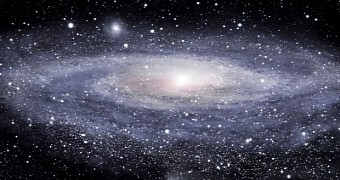Galaxies don't stay the same shape over their lifetime, researchers at Cardiff University in the UK show in a new study in the journal Monthly Notices of the Royal Astronomical Society.
Rather, they go through a cosmic metamorphosis of sorts and alter their anatomy, the scientists say.
In turn, this shows the universe itself has transformed a great deal since it came into being following the Big Bang nearly 14 billion years ago, the Cardiff University astronomers explain.
Documenting how galaxies change over time
As part of their investigation, the Cardiff University team studied around 10,000 of the nearby galaxies that now populate the cosmos and classified them according to their shape.
They identified some of the galaxies as being flat, rotating, disk-shaped ones, much like our Milky Way, and others as being large, spherical and with their stars arranged in somewhat disorderly patterns.
Then, the astronomers used the Hubble and the Herschel telescopes to sneak a peek further into the universe and, therefore, back in time, and determine what galaxies looked like 8 billion years ago, not long after the Big Bang.
They discovered that, in the early days of the cosmos, around 83% of stars were located in disk-shaped galaxies. These days, however, merely 49% are part of such galaxies, many others being found in spherical galaxies.
The Cardiff University team says this indicates that, having formed in the aftermath of the Big Bang, many of the universe's disk-shaped galaxies evolved to become spherical ones.
“A large proportion of galaxies have undergone a major ‘metamorphosis’ since they were initially formed after the Big Bang,” the researchers write in a report detailing their work.
“Many people have claimed before that this metamorphosis has occurred, but by combining Herschel and Hubble, we have for the first time been able to accurately measure the extent of this transformation,” adds study lead author Steve Eales.
Well, how did these transformations happen?
The Cardiff University team might have found proof that galaxies change and alter their appearance over time, but they can't yet fully explain how such transformations come to happen.
One theory is that they occur when two disk-shaped galaxies get a tad too close to each other and their gravitational pulls force them to merge, the result being a pileup of stars.
Then, it might be that disk-shaped galaxy can become a spherical one all on its own when its stars begin to migrate towards its core and eventually form a sphere-like pileup.

 14 DAY TRIAL //
14 DAY TRIAL //